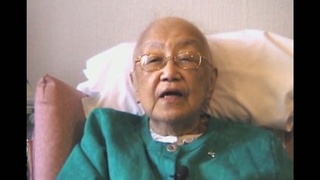Interviews
Avoiding the Japanese military
I*: And why did you return to the United States?
Well, that was before the Second World War. And my parents was worried that if I stayed in Japan, they might take me into their, you know, as the soldiers and go to the war. So, I had a citizenship [in] United States. So, if I come back in the United States, the Japanese government can’t, you know, can’t call me for the military. So that was the reason.
* "I" indicates an interviewer (Daniel Lee).
Date: February 4, 2004
Location: California, US
Interviewer: Daniel Lee
Contributed by: Watase Media Arts Center, Japanese American National Museum









